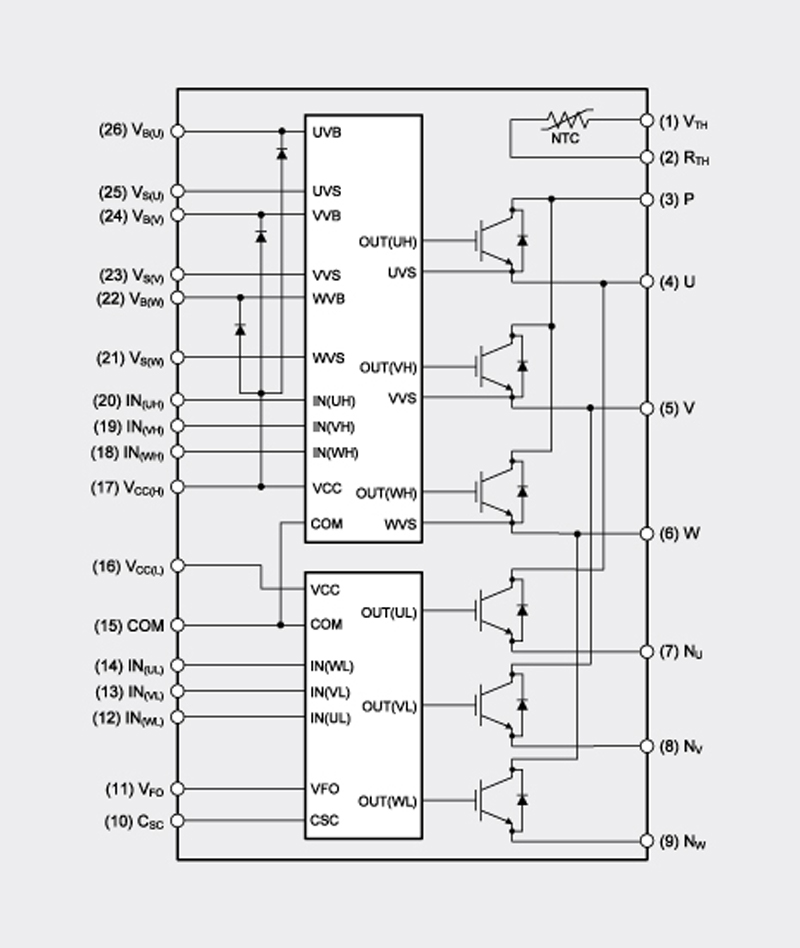The rising cost of electricity will increase the consumer demand for home appliances that offer energy savings. However, this is only one consideration that consumers must consider when purchasing a new home appliance such as a washing machine or dishwasher. The lifetime and reliability are important aspects - in many cases, of equal importance as the consumption of electricity or water. It is obvious that the lifetime and reliability is oftentimes synonymous with the brand name of the home appliance. During the last decade a growing demand for home appliances with less impact on the environment in terms of electrical waste can be observed. EcoDesign looks at all energy-consumption at each step. Furthermore it considers the whole life cycle costs including production and disposal costs. The directive established a framework for setting EcoDesign requirements and will force all manufacturers, which are building product applied from AC line to be energy efficient. To meet the EcoDesign requirements the mandatory technologies are summarized by different studies. The studies explicitly point out that only permanent magnet synchronous motors (PMSM) or high-efficiency induction motors fed with variable- speed drives are able to meet these energy-saving challenges. The potential savings of such drives are huge in case of variable-load applications and frequent start and stop cycles - commonly used in home appliances. However, not all motor applications can benefit from variable-speed drives particularly when only a constant speed is needed. New technologies are the key to success in order to satisfy the requirements of energy-efficient home appliances. PMSMs are successfully replacing traditional motors. Figure 1 shows a simplified block diagram of a washing machine. A washing machine for household is fed by single AC line followed by the required power factor correction either active or as in many cases passive. The new motor technologies require variable -speed drives. To enable such drives, designers have conventionally relied on discrete IGBT/MOSFET solutions, which are now more and more replaced by intelligent power modules (IPM). IPMs are increasingly used since there are some significant benefits using integrated solutions. The recently launched m-MiniDIP SPM® (smart power module) is used as an example in the block diagram to drive the washing tub. It excels in the high integration of 3 half-bridges (Figure 2) including bootstrap diodes, NTC, fine-tuned gate drivers and additional protection functions as UVLP, SCP and fault output. To reduce the energy consumption of the module the stand-by current of the gate driver is decreased which enables to realize energy saving drives. The precisely matched IGBTs and drivers ensure higher performance. Performance variations are much more controllable compared to a discrete solution. In addition the fully isolated module (39mm x 23mm) reveals increased reliability since the protection functions are close to the power switches and the low thermal resistance of the package results in lower temperature changes over a load cycle. The "failure in time" rate of this new family is comparable to the rate of one discrete IGBT. Hence the reliability of the module will outperform the discrete solution. Furthermore the wide range of junction temperature from -40°C to +150°C makes the module suitable for home appliances and for industrial applications.

To drive smaller motors like circulating pumps IPMs using MOSFETs instead of IGBTs are recommended. Especially for low output currents MOSFETs offer smaller losses compared to IGBTs due to the absence of the knee voltage and current tail. In addition the short circuit withstand time of MOSFETs can be up to one order of magnitude higher than the corresponding value of IGBTs. Therefore the use of MOSFETs is basically the preferred solution for low power appliances. TinyDIP SPM modules are a typical example of such IPMs. This integrated MOSFET solution is ideal for low power applications like pumps and fans since this fully isolated module can be placed very close to the motor. Even though the module size is only 29mm x 12mm, the maximum possible output power with a heat sink goes up to 200W, which cannot be reached with a IGBT- based solution of the same size. To simplify the "pick and place" assembly of this IPM it is also available as SMD packaging. In many cases, the use of such SMD IPM without heat sink is preferred. Now the maximum output power would be limit to roughly 90W but on the other hand manufacturing of the PCB is simplified. Both examples demonstrate that the use of IPMs can simplify the design of energy-saving drives due to an easier and faster design and higher flexibility. The upcoming EcoDesign regulation of the European Union and its impact to energy-using appliances intensify the trend towards energy-efficient drives. Permanent magnet synchronous motors controlled with intelligent power modules have an important role to achieve the needed reduction of wasted energy. The example of a washing machine shows typical applications areas where the use of intelligent power modules can simplify and accelerate the design-in phase. These new solutions enable designers to develop cost-effective solutions for improving the overall environmental performance. www.fairchildsemi.com